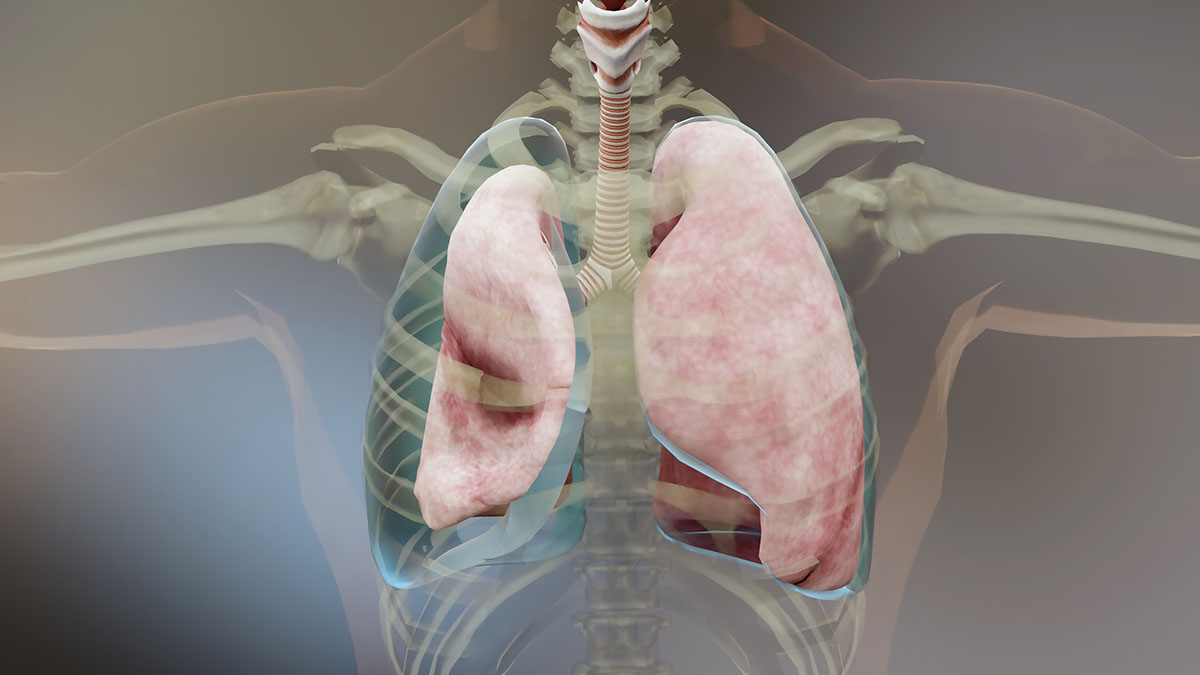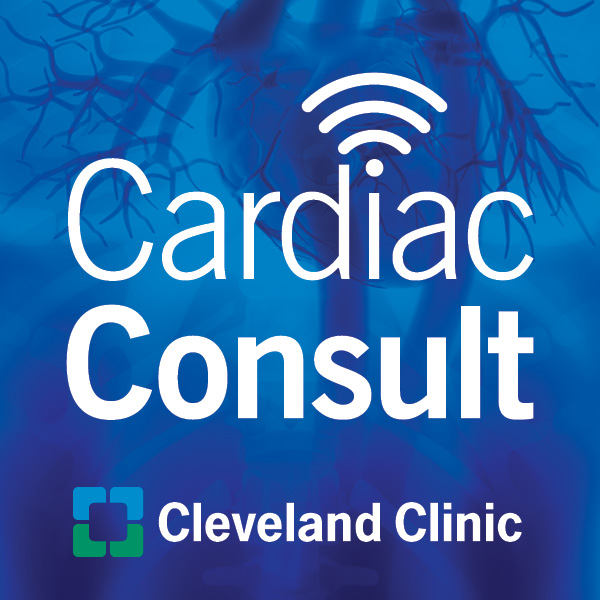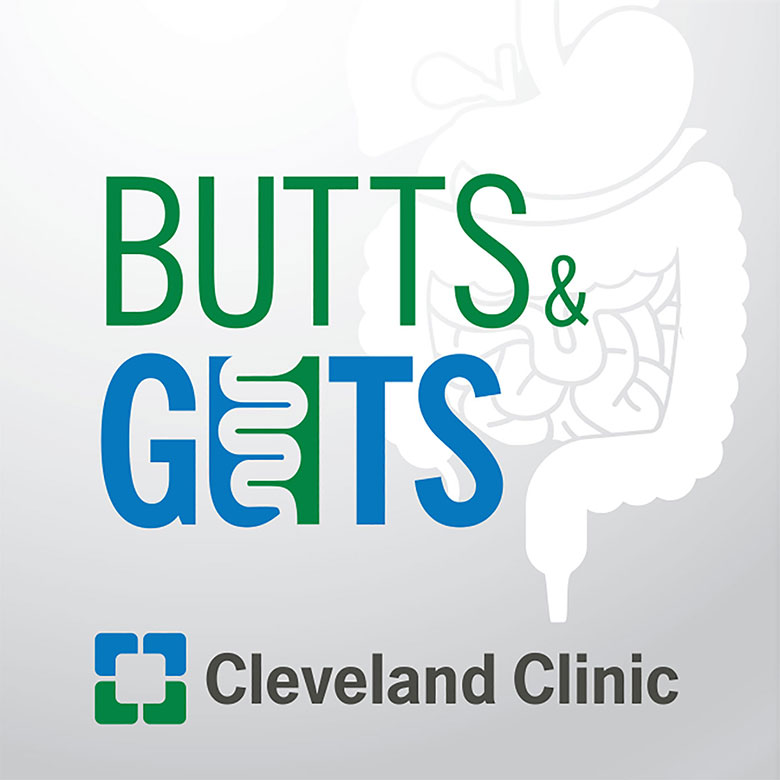A Review of Spontaneous Pneumothorax

Spontaneous pneumothorax is an abnormal condition of the lung characterized by the collection of gas in the pleural space. Natalie Salvatore, RN, speaks with Alex Bribriesco, MD, to provide an overview of diagnosis and management of patients with spontaneous pneumothorax. Looking to refer a patient? Call the referring Physician Hotline 24/7: 855.REFER.123 (855.733.3712)
Subscribe: Apple Podcasts | Podcast Addict | Buzzsprout | Spotify
A Review of Spontaneous Pneumothorax
Podcast Transcript
Announcer:
Welcome to Cleveland Clinic Cardiac Consult, brought to you by the Sydell and Arnold Miller Family Heart, Vascular and Thoracic Institute at Cleveland Clinic.
Natalie Salvatore, MSN, MBA, RN, CCRN:
My name is Natalie Salvatore, I'm a registered nurse at the Heart, Vascular and Thoracic Institute at Cleveland Clinic, and I'm joined today by Dr. Alex Bribriesco.
Alejandro Bribriesco, MD:
Hi there. Thank you for having me. My name is Alex Bribriesco. I'm one of the staff thoracic surgeons here at Main Campus Cleveland Clinic. I'm an assistant professor of surgery at the Cleveland Clinic Lerner College of Medicine at Case Western Reserve University, and I'm also a staff physician surgeon at our Cleveland VA Medical Center. It's a pleasure to be here to discuss pneumothorax with you.
Natalie Salvatore, MSN, MBA, RN, CCRN:
We all know pneumothorax, but what are the different types of it? What distinguishes one from another?
Alejandro Bribriesco, MD:
Great. So no, it's a very important question and so when you break down pneumothorax, it's good to think about it either as spontaneous or traumatic pneumothorax. With the traumatic pneumothorax, it's pretty straightforward. There's an event that happened, a trauma, an accident, a central line insertion, something that is clear what injured the lung or the pleura that created the pneumothorax. But the focus of this particular talk, I think would be good to, on the other part, this spontaneous pneumothorax or it's unclear why the patient developed the pneumothorax, at least initially.
Alejandro Bribriesco, MD:
So when I think about spontaneous pneumothorax, as most people might, you split it up into primary spontaneous pneumothorax and secondary spontaneous pneumothorax. With primary spontaneous pneumothorax, those are people and patients who don't have any underlying lung disease that they're aware of who just at rest develop a pneumothorax and then begin the investigations that may lead them either to stay in that group of primary spontaneous pneumothorax or then shift over into the second group of secondary spontaneous pneumothorax.
Alejandro Bribriesco, MD:
With secondary spontaneous pneumothorax, it's usually the pneumothorax is caused by their underlying lung disease. So patients who have COPD, emphysema, cystic fibrosis, they have some other underlying lung disease that would predispose them to then having a spontaneous pneumothorax. So really it's when you're thinking about spontaneous pneumothorax, is it primary or is it secondary and that'll help to guide your further treatment decisions.
Natalie Salvatore, MSN, MBA, RN, CCRN:
Great. So seeing a patient, what would be your first steps into diagnostic testing and then subsequent treatment options?
Alejandro Bribriesco, MD:
Great. As I'm sure most of the listeners can imagine that with a spontaneous pneumothorax, depending on its severity, the patient will call 911 or call your office saying that they're short of breath or having chest pain, and the recommendation is to go urgently to the emergency room to be evaluated. And so at that point, after getting vital signs, a chest x-ray is often the very first imaging test that they get, which will give us a sense as if it's a small or large pneumothorax that may require emergent intervention, which in this case would be inserting a chest tube or a pigtail catheter. After that with re-expansion of the lung and stabilization of the patient, a CT scan may be obtained as well to get a good sense as to how does the rest of the lung look. That can help to distinguish is a patient a primary spontaneous pneumothorax patient, where the rest of the lung looks relatively normal, or are they more of a secondary spontaneous pneumothorax where there's underlying emphysematous changes, blebs, restrictive lung disease or some other underlying lung disease.
Alejandro Bribriesco, MD:
And so within the acute hospital stay, consultations usually happen fairly quickly to pulmonary medicine, thoracic surgery to help to address these issues, but certainly as the patient transitions as an outpatient, if you're a primary care physician who has a patient who had a spontaneous pneumothorax, it'd always be reasonable to seek expert consultation either with a formal pulmonologist or certainly a thoracic surgeon that can help to give recommendations along the way.
Natalie Salvatore, MSN, MBA, RN, CCRN:
Great. When would surgery be most appropriate?
Alejandro Bribriesco, MD:
Great question. So there's a lot of discussion about this, a lot of literature that's been published and so in terms of consensus guidelines, there are some guidelines from the Chest Group published back in 2001, which people still will refer to, in the setting of spontaneous primary pneumothorax, again, patients with normal underlying disease, most of the time we would recommend that the patient not undergo surgery after the first pneumothorax. Those patients are decently managed with a chest tube, lung expansion, removal of the chest tube, and then observation. In that case, the recurrence rate is between 10 and 30 percent of patients, so one and three will have a recurrence and usually the highest risk is within the first year. Things that will increase the risk of recurrence are smoking. Patients who smoke have more than a four-fold increased risk of recurrence so getting patients to stop smoking is a cornerstone of the management of this disease.
Alejandro Bribriesco, MD:
And the other thing that would increase the risk that some of the studies have shown is that if a patient is a female, they have a higher rate of recurrence. Now all comers for primary spontaneous pneumothorax, is mostly male patients, the vast majority and so the few female patients who do get a spontaneous primary pneumothorax, that group is at higher risk for recurrence.
Alejandro Bribriesco, MD:
For the primary spontaneous pneumothorax patients, usually the first time it happens, you can do observation. The second time that it happens, you would strongly consider doing a minimally invasive surgical intervention where in this case it would involve chemical pleurodesis, so placing either doxycycline or talc or some other agent to help to facilitate pleurocentesis. And sometimes if there is a bleb or some abnormal part of the lung that's seen at surgery, removing that part of the lung as well as part of the surgical treatment of primary spontaneous pneumothorax.
Alejandro Bribriesco, MD:
Now to talk about the secondary spontaneous pneumothorax, so patients who have underlying lung disease, the experts would recommend surgical intervention for patients who are safe to undergo surgery after that very first incident or during that first hospital stay. The reason for that is those patients with underlying lung disease have a much higher rate of recurrence, so more than 50 percent of the time these patients will have a recurrence of their pneumothorax. The second reason is the patients who have the underlying lung disease are in general much older than the primary group, as well as their lung function is already disease such that they're not going to compensate as well if they do have another pneumothorax placing their life at higher risk from the just observation standpoint.
Alejandro Bribriesco, MD:
So secondary spontaneous pneumothorax, we recommend considering that surgery during that first hospital stay and it'll be just as I just described for the primary group, a minimally invasive surgery that allows the administration of chemicals to help to encourage pleurodesis, and then also resection of any lung that seems safe and amenable to that.
Natalie Salvatore, MSN, MBA, RN, CCRN:
Great. And then what would you suggest as far as follow up recommendations?
Alejandro Bribriesco, MD:
In the group where surgery was not performed, there would be a very close interval follow-up after discharge from the hospital somewhere between seven and 14 days with some kind of repeat chest imaging, usually a chest x-ray, just to ensure that there is stability and there's no recurrence. At that point, after discussion with the patient and getting a sense as to how they feel about the whole situation, seeing them probably at some other short interval, somewhere between three to six months just to, again, make sure that things are stable and then it would be at the discretion of that primary care physician or the pulmonary medicine doctor. Certainly if they had a chest tube placed here, our typical practice is to see them back at that seven to 14 day visit, check on their chest tube incision site, make sure their x-ray looks good, and then just to again mention to the patient what surgery might involve. That way they have that information upfront in case they do ultimately go down the road towards surgery.
Alejandro Bribriesco, MD:
Now in the secondary spontaneous pneumothorax group, those are the patients who most likely underwent surgery and they also have underlying lung disease, so they may already be established with a pulmonary medicine specialist, and if not, they would hopefully have been set up during their hospital stay.
Natalie Salvatore, MSN, MBA, RN, CCRN:
Thank you so much for explaining all of this and providing your recommendations.
Alejandro Bribriesco, MD:
Thank you. It was a pleasure to be here.
Announcer:
Thank you for listening. We hope you enjoyed the podcast. We welcome your comments and feedback. Please contact us at heart@ccf.org. Like what you heard, subscribe wherever you get your podcasts or listen at clevelandclinic.org/cardiacconsultpodcast.

Cardiac Consult
A Cleveland Clinic podcast exploring heart, vascular and thoracic topics of interest to healthcare providers: medical and surgical treatments, diagnostic testing, medical conditions, and research, technology and practice issues.



